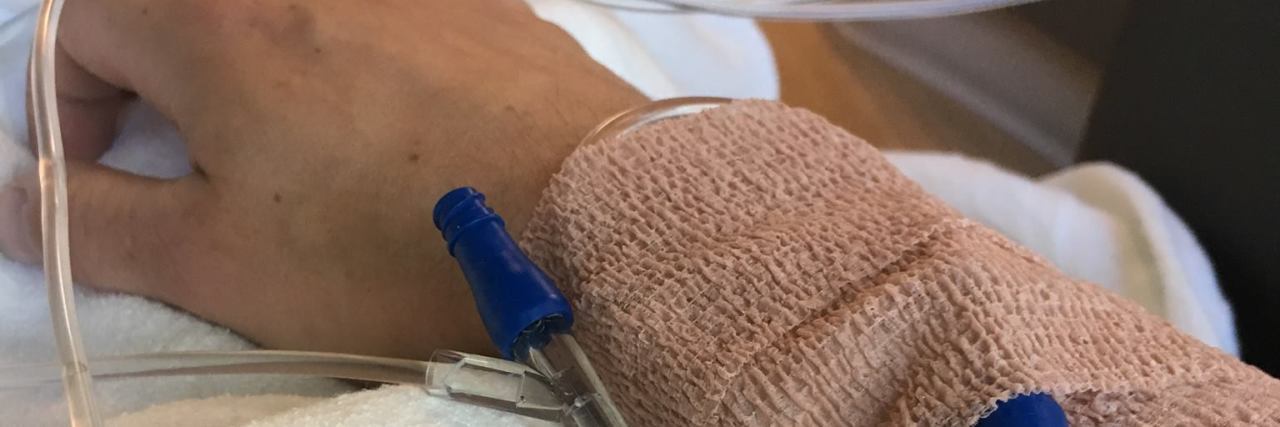5 Misconceptions I've Heard About Chronic ITP
I was first diagnosed with immune thrombocytopenia (ITP) at 18 months of age. ITP is a bleeding disorder where the immune system destroys platelets, the cells needed to form blood clots. As a toddler, my parents had to bring me home from the hospital in a big white helmet to protect my brain from bleeding. I was lucky to have many years of total remission, but unfortunately became sick again. Chronic ITP that persists into adulthood is rare, so I often run into misconceptions about what my illness is like.
1. “Oh, I know about ITP. My 6-year-old niece had that.”
Most people do not realize that ITP in children is different from ITP in adults.[1] ITP in children is usually short-term and self-limiting, whereas in adults it is more often chronic and hard to treat. My primary care doctor was optimistic that I would be one of the 20 percent of lucky adults who would go into remission, but so far this hasn’t happened. Adult patients are also more likely to get some of the really heavy-weight treatments like chemotherapy drugs and surgery, which may still not work. I have yet to meet another adult who has the chronic, intractable form of ITP that I have.
2. “I have a cold. Do I need to stay away from you?”
Another common misconception I run into is that I have some sort of immune deficiency. This is a totally understandable leap to make, though! ITP is caused by the immune system destroying cells it should leave alone, not by having an immune deficiency. It is important to understand, however, that many patients with ITP do have to take steroids, immunosuppressive drugs or IV antibodies that can weaken the immune system. I actually hardly ever get sick from external viruses or bacteria. I do still prefer to avoid people who have a contagious illness like the common cold, because being sick when you’re already sick is no fun.
3. “You don’t have any bruises! You’re on the mend!”
There’s more to ITP than bleeding and bruises. Like most autoimmune diseases, ITP has an inflammatory component [2] that affects the body, whether or not platelet counts are severely low. For me, this sort of feels like I am recovering from a viral illness even though I don’t have one. I often feel foggy, cold, and exhausted for no reason. Patient surveys show that ITP leads to severe fatigue [3] as well as decreased work productivity and lower quality of life. [4] I also deal with a lot of drug side effects. More on that below.
4. “Your medicine is working so you must be feeling better, right?”
Here’s the annoying thing about chronic illness: the treatments are often worse than the disease itself. It would be nice if I were one of the many people with milder ITP who don’t need treatment, but my platelets regularly get so low that I’m in the range where increased risk of intracranial hemorrhage (ICH) occurs.[5] This is a rather frightening term which means bleeding in the brain. ICH is super rare, but it’s also serious enough that most doctors want to treat to raise the platelet count just to be sure it doesn’t happen. This leaves me stuck dealing with unpleasant side effects of immunoglobulin infusions like headaches, fatigue, neuroinflammation, and flu-like symptoms.[6]Finding the right treatment with the fewest side effects is tough, because all of them have their downsides and any of the available treatments can stop working at any time.
5. “You should get some kitchen gloves, then you wouldn’t cut yourself.”
Oddly, I’ve never cut myself with a kitchen knife since having ITP, maybe because I’m extra careful around knives now. I have, however, invented a seemingly endless number of ways to make myself bleed, some of them hilarious. I’ve bled from fingernail clippers, from falling in the snow, running into a door post, having a basket fall on my face, getting my hand caught in a cabinet drawer, playing with my dog, stubbing my toe, and sometimes I don’t even remember what started it. I’m just a walking accident waiting to happen some days. Once, I fell down and braced myself with my hand, and the bruising was so terrible my doctor thought I had broken my wrist. I want to stay as active as possible, so I just keep lots of first aid supplies handy wherever I go. I have learned through trial and error what I can handle myself and what requires a visit to the doctor. It’s amazing what our bodies can adjust to.
This story originally appeared on Muddy Paw Therapy

